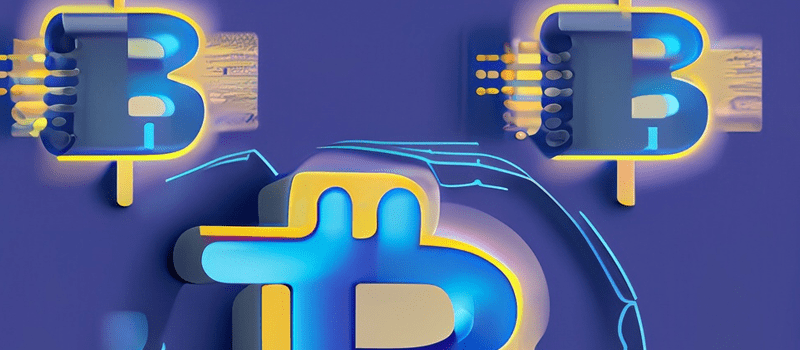Blockchain Nonce: How They Power Consensus and Mining

As I delved deeper into the intricate world of blockchain technology, I stumbled upon a hidden gem that holds the key to its security: the nonce. This seemingly innocuous term conceals a powerful cryptographic tool that safeguards the integrity and immutability of blockchain transactions. In this article, I will unravel the mysteries surrounding the nonce and its pivotal role in cracking the code of blockchain security.
Join me on this enlightening journey as we explore the untapped potential of nonce and its implications for the future of decentralized systems.
Introduction
A nonce is a crucial component in blockchain technology that enables trustless and secure consensus between nodes in a decentralized network. This article will provide a comprehensive overview of how nonces work and why they are essential to blockchain security.
Some key points we’ll cover:
- What is a nonce and what role does it play?
- How nonces enable the mining process
- The properties of nonces
- How nonces provide security benefits
“A nonce is an arbitrary number that may only be used once. It’s similar in spirit to a nonce word, hence the name. Nonces are used for a variety of purposes in cryptography and computer security.” – Investopedia
Nonces are fundamentally important to blockchain technology. As one source summarizes:
“In blockchain technology, a nonce is an abbreviation for ‘number used once.’ It is a numeric value added to the hashed — or encrypted — block that when rehashed meets the difficulty level restrictions. The nonce is the cryptographic number that blockchain miners are solving for.” – CNBC
In the next sections, we’ll explore more in-depth how nonces enable key blockchain functions like mining and consensus.
What is a Nonce?
A nonce is a random number that is only used once when generating each new block in a blockchain. Some key properties:
- It is an arbitrary number that varies with each new block.
- It may only be used once – hence the name “nonce” or “number used once”.
- It is included in the block header.
“A nonce is an arbitrary number that may only be used once. It’s similar in spirit to a nonce word, hence the name. Nonces are used for a variety of purposes in cryptography and computer security.” – Investopedia
More specifically in blockchain technology:
“A nonce is a numeric value that is used only once when hashing data. The nonce is used to vary the output of the hash function to produce unique hashes for similar sets of data.” – Binance Academy
Here is a simple table summarizing the nonce’s key attributes:
| Property | Description |
|---|---|
| Unique | Used only once per block |
| Random | Generated randomly |
| Numeric value | Typically 32-bit integer |
| Included in block header | Combined with block data to generate hash |
The nonce is fundamental to how blockchains achieve consensus and security, as we’ll explore next.
The Role of Nonces
Nonces serve a crucial role in blockchain technology and mining. Their key functions include:
- Enabling miners to vary the header of each block to produce different hashes.
“In blockchain technology, a nonce is an arbitrary number that is used in mining only once. Miners change a nonce in a cryptocurrency block repeatedly to produce different hashes.” – Intellipaat
- Providing the variability needed for proof-of-work and consensus.
“The nonce in each block is changed repeatedly to try and satisfy the proof-of-work so that the new block can be added to the blockchain.” – 101Blockchains
- Preventing duplicate hashes and ensuring security.
“Nonces create randomness so that each hash produces a unique output. This prevents duplicate hashes and secures the blockchain from attack vectors.” – Phemex
Without nonces, all blocks would produce the same hash. This would break the blockchain’s trustless consensus.
Here’s a summary of the nonce’s key roles:
| Role | Description |
|---|---|
| Provides variability | Enables different hashes for each block |
| Enables mining | Miners can alter nonce to get valid hashes |
| Allows consensus | Proof-of-work depends on nonce to find valid blocks |
| Creates uniqueness | Prevents duplicate hashes |
| Provides security | Protects blockchain integrity |
In the next section, we’ll look at exactly how nonces work to enable these functions.
How Nonces Work
The nonce is an integral part of the mining process. Here is an overview of how it works:
- When creating a new block, miners will generate a random nonce value.
“The nonce value is generated randomly when a block is created.” – Shardeum
- This nonce is combined with the block’s data and hashed to produce an output.
“The nonce is combined with block data and hashed to produce a hash output.” – Bitcoin Wiki
- If the output hash meets the network’s difficulty target, the block is valid.
“If the hash satisfies the difficulty restrictions, then the block is valid.” – CNBC
- If not, the nonce is changed and the block is re-hashed until a valid output is found.
“If the hash doesn’t meet the difficulty target, the nonce is changed and the block is re-hashed with the new nonce value.” – Intellipaat
This demonstrates how miners compete to find valid nonces that satisfy the difficulty target. The difficulty adjusts based on the total computing power on the network.
Here is a quick summary:
| Step | Description |
|---|---|
| 1. Generate nonce | Miner generates random nonce value |
| 2. Combine and hash | Nonce concatenated with block data and hashed |
| 3. Check difficulty | If hash meets target, block is valid |
| 4. Adjust nonce | If not valid, new nonce tried |
Nonces enable the proof-of-work and mining that secures blockchains like Bitcoin and Ethereum.
Properties of a Nonce
Nonces have special properties that make them well-suited for enabling blockchain consensus and security.
Uniqueness
- A nonce can only be used once per block.
“A nonce may only be used once.” – Investopedia
- This prevents duplicate values and ensures each block hash is unique.
Randomness
- Nonces are generated through a random number algorithm.
“Nonces are generated randomly using an algorithm.” – 101Blockchains
- This random component introduces variability into hashing.
Adjustability
- The nonce value can be quickly and easily changed.
“The nonce can be quickly changed to produce new hashes.” Bitcoin Wiki
- This allows miners to alter it during proof-of-work until a valid hash is found.
These properties enable nonces to facilitate the mining and consensus process securely. Uniqueness, randomness, and adjustability make nonces ideally suited for blockchain hashing and proof-of-work.
The Mining Process
Nonces are an integral part of the competitive mining process in proof-of-work blockchains.
- Miners race to find valid nonce values that satisfy the difficulty target for new blocks.
“Miners change the nonce repeatedly to find a hash that meets the network’s difficulty target.” – Binance Academy
- The difficulty target gets harder as more miners join the network and computing power increases.
“As more miners join the network, the difficulty adjusts to require even more computing power to solve for valid nonces.” – Phemex
- Finding the special nonce involves computational trial-and-error guesswork.
“Miners guess different nonce values and check if the hash meets the target through trial-and-error.” – Intellipaat
- The miner who finds a valid nonce first broadcasts the block and earns the reward.
“The first miner to find a valid nonce broadcasts their block and receives the mining reward.” – 101Blockchains
This competitive process secured by nonces enables decentralized consensus on proof-of-work blockchains.
Security Benefits
Nonces provide significant security benefits for blockchain networks:
- They enable trustless decentralized consensus between nodes.
“Nonces allow the blockchain network to achieve consensus in a decentralized, trustless way.” – Bitcoin Wiki
- Proof-of-work relying on nonces makes the blockchain tamper-evident.
“The proof-of-work system protected by nonces makes blockchains tamper-proof.” – Shardeum
- Nonces introduce randomness that prevents prediction or manipulation of hashes.
“Nonces create randomness in hashing, preventing manipulation of the blockchain.” – Dataconomy
- This protects the blockchain from attacks like double-spends or alterations of data.
“Nonces protect against attacks like double-spends by securing blockchain integrity.” – CNBC
By facilitating decentralized consensus and introducing randomness, nonces are essential to blockchain security, integrity, and trustlessness.
Conclusion
In summary, nonces play a crucial role in blockchain technology and its security:
- They enable proof-of-work mining and decentralized consensus between nodes.
“Nonces make proof-of-work possible, allowing decentralized consensus on blockchains.” – Investopedia
- Their randomness facilitates trustless verification of transactions.
“The nonce introduces randomness that allows trustless verification of blockchain transactions.” – Phemex
- Nonces provide variability in hashing, preventing duplication or manipulation.
“Nonces provide the variability in hashing required to prevent duplication and secure the blockchain.” – 101Blockchains
- This makes nonces essential for blockchain security and integrity.
“Nonces are absolutely essential to blockchain security due to the variability and randomness they provide.” – Dataconomy
Understanding the role of nonces provides insight into how blockchains achieve decentralized consensus and maintain security. Their crucial role enables trustless transactions without central authorities.






Responses